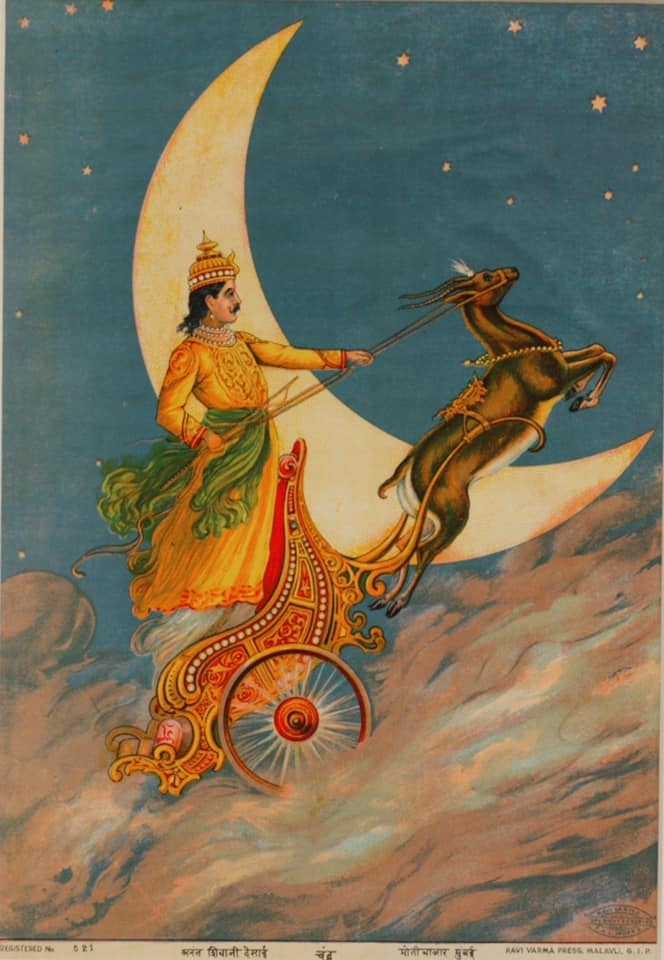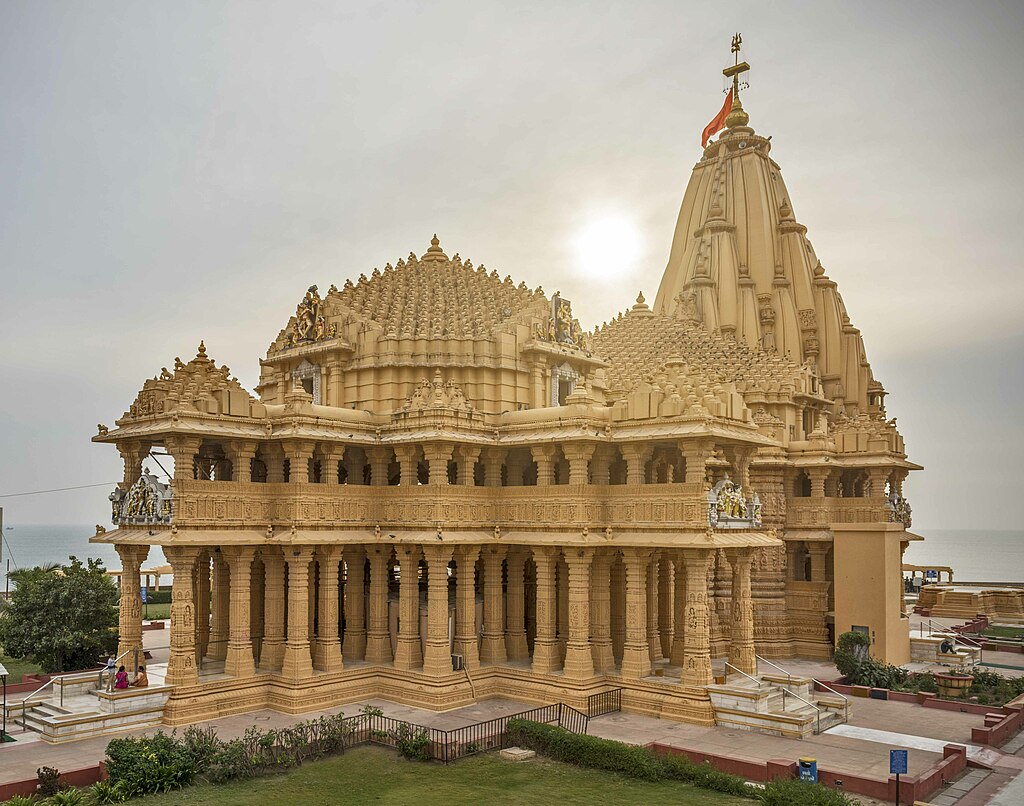Mythology and Origin Story
Chandra’s origins trace back to Vedic literature, where he is praised in the Rig Veda as the essence of Soma, the sacred nectar of the gods, and the nurturer of flora. Born from the mind of the primordial being (as per Purusha Sukta), Chandra is intimately connected to thoughts, emotions, and speech, earning the title Vachaspati (Lord of Speech).
Myths that surround Chandra:
-
Birth and Power: Chandra was born to sage Atri and Anusuya and given dominion over the Moon, becoming part of the Navagraha (nine celestial influencers).
-
Chandra and Tara: He fell in love with Tara, the wife of Brihaspati (Jupiter), resulting in the birth of Budha (Mercury). This love triangle led to celestial tensions and added to Chandra’s mythic complexity.
-
Marriage to Daksha's Daughters: Chandra married 27 daughters of Daksha, representing the lunar constellations (Nakshatras), but showed favoritism to Rohini. Cursed by Daksha for his neglect of the other wives, Chandra began to wane, giving rise to the lunar phases.

Iconography and Symbols
Chandra is portrayed as a fair, youthful deity with a serene expression, riding a chariot drawn by ten white horses or geese. Sometimes, he’s shown seated on a lotus atop his chariot.
Common symbols include:
-
Crescent Moon:Signifying the phases of the moon and the rhythm of time.
-
Lotus Flower: Representing purity and divine beauty.
-
White Chariot and Antelope: Symbols of clarity, grace, and swift cosmic movement.
In Buddhist art, particularly from the Newar tradition of Nepal, Chandra is occasionally featured in mandalas, though more often as a secondary figure rather than a central deity.
Worship and Rituals
Chandra holds spiritual importance in Vedic rituals, astrology, and modern Hindu practices:
-
Karva Chauth: Married women fast and pray for their husbands' well-being, breaking the fast upon sighting the moon.
-
Somvar (Monday) Fasts: Devotees fast on Mondays to seek Chandra’s blessings for emotional balance and mental clarity.
-
Chandra Graha Shanti Puja: Conducted to appease Chandra during astrological imbalances that may affect emotional or mental well-being.
He is also honored at temples like the Somnath Temple in Gujarat, where Lord Shiva wears Chandra on his matted hair as a crescent, symbolizing divine protection and renewal.
Temples
Though not as prominently worshipped as deities like Shiva or Vishnu, Chandra has sacred associations:
-
Somnath Temple (Gujarat): According to legend, Chandra was saved from Daksha’s curse by Shiva here, earning the deity the name Chandrashekhara (He who wears the moon).
-
Chandrabhaga River (Himachal Pradesh): Originating from the mythical site where Chandra was split by Brahma, the river symbolizes both spiritual cleansing and the harmony of masculine and feminine forces.

Legends
-
Lunar Eclipses: During Samudra Manthan, Chandra helped expose the demon Rahu’s deception. In revenge, Rahu attempts to devour Chandra, explaining lunar eclipses (Chandra Grahan).
-
Ganesha's Curse: Ganesha cursed Chandra for mocking him, leading to the moon's periodic dimming, this is a mythological explanation for the moon’s phases.
-
Symbol in Feminine Power: Goddesses like Kali and Durga wear the crescent moon on their foreheads, symbolizing control over the mind and emotions.
In Tibetan Buddhism, Chandra is found within mandalas as a subsidiary figure or under the feet of deities like Vajrabhairava, showing how his influence transcends religious boundaries.
Did you find this information interesting?
